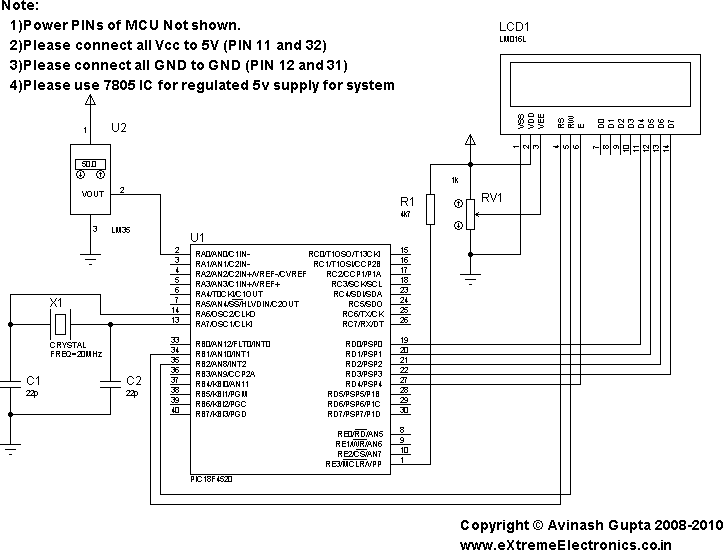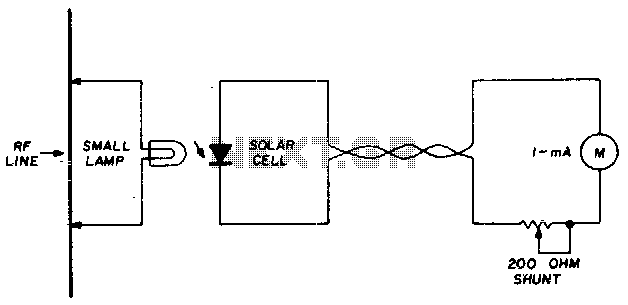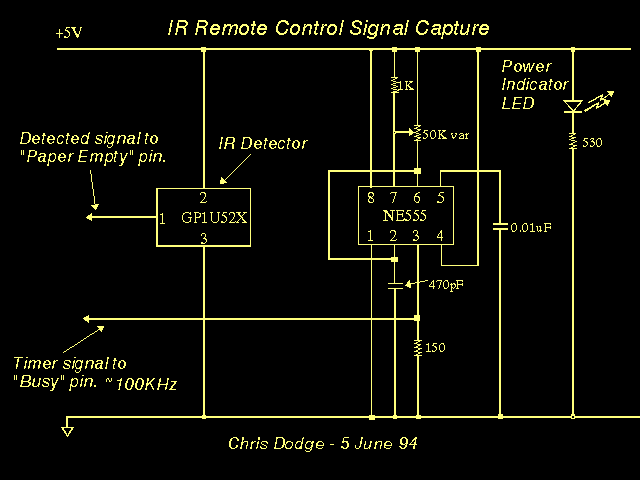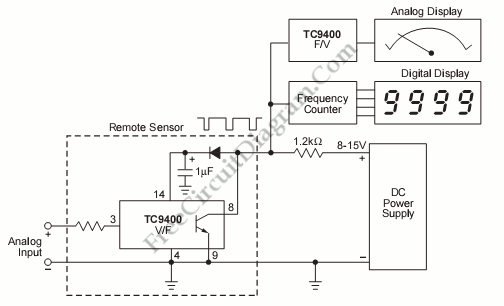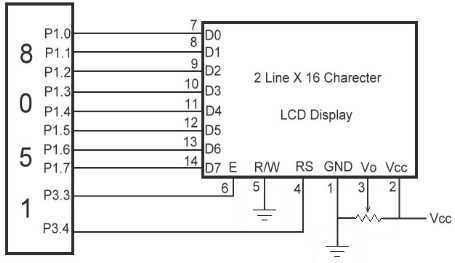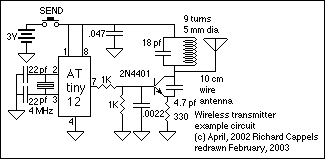
Remote ControlCircuit Through RF Without Microcontroller
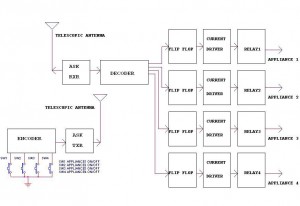
This circuit illustrates a remote control circuit diagram using RF technology without the use of a microcontroller. Features include a simple remote control circuit that operates via radio frequency.
The remote control circuit operates by transmitting signals through radio waves, enabling wireless communication between the transmitter and receiver. The system typically comprises two main components: the transmitter circuit and the receiver circuit.
The transmitter circuit is designed to generate radio frequency signals. It usually includes a simple oscillator circuit, which can be built using components such as a 555 timer IC or a transistor-based oscillator. The oscillator creates a modulated signal that represents the control commands. A radio frequency (RF) module, such as an RF transmitter, is used to broadcast these signals. The choice of frequency is critical, as it must comply with local regulations and avoid interference with other devices.
On the receiving end, the receiver circuit consists of an RF receiver module that captures the transmitted signals. This module demodulates the received signal and converts it back into a usable form. The demodulated signal can then be processed to control various devices, such as motors, lights, or other electronic components. Additional components such as amplifiers and filters may be included to enhance signal integrity and reduce noise.
Power supply considerations are also important for both the transmitter and receiver circuits. Typically, battery-operated systems are used for portability, while ensuring that the power requirements of all components are met.
Overall, this remote control circuit design is valued for its simplicity and effectiveness in enabling wireless control without the complexity of a microcontroller, making it suitable for various applications in hobbyist projects and basic automation tasks.This circuit shows about Remote Control Circuit Diagram Through RF Without Microcontroller . Features: simple remote control circuit, uses radio . 🔗 External reference
The remote control circuit operates by transmitting signals through radio waves, enabling wireless communication between the transmitter and receiver. The system typically comprises two main components: the transmitter circuit and the receiver circuit.
The transmitter circuit is designed to generate radio frequency signals. It usually includes a simple oscillator circuit, which can be built using components such as a 555 timer IC or a transistor-based oscillator. The oscillator creates a modulated signal that represents the control commands. A radio frequency (RF) module, such as an RF transmitter, is used to broadcast these signals. The choice of frequency is critical, as it must comply with local regulations and avoid interference with other devices.
On the receiving end, the receiver circuit consists of an RF receiver module that captures the transmitted signals. This module demodulates the received signal and converts it back into a usable form. The demodulated signal can then be processed to control various devices, such as motors, lights, or other electronic components. Additional components such as amplifiers and filters may be included to enhance signal integrity and reduce noise.
Power supply considerations are also important for both the transmitter and receiver circuits. Typically, battery-operated systems are used for portability, while ensuring that the power requirements of all components are met.
Overall, this remote control circuit design is valued for its simplicity and effectiveness in enabling wireless control without the complexity of a microcontroller, making it suitable for various applications in hobbyist projects and basic automation tasks.This circuit shows about Remote Control Circuit Diagram Through RF Without Microcontroller . Features: simple remote control circuit, uses radio . 🔗 External reference
